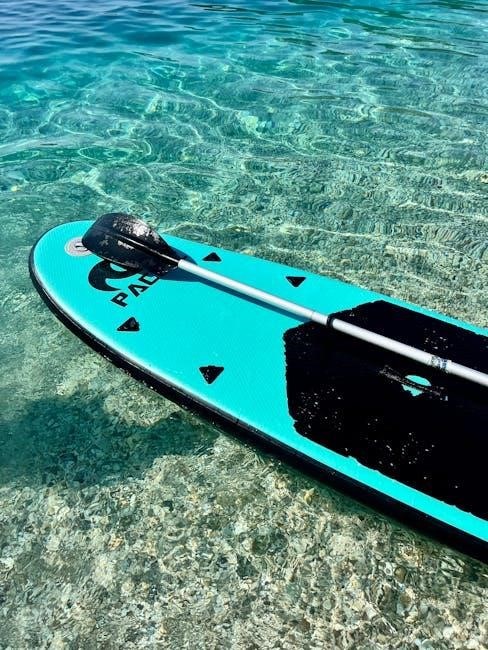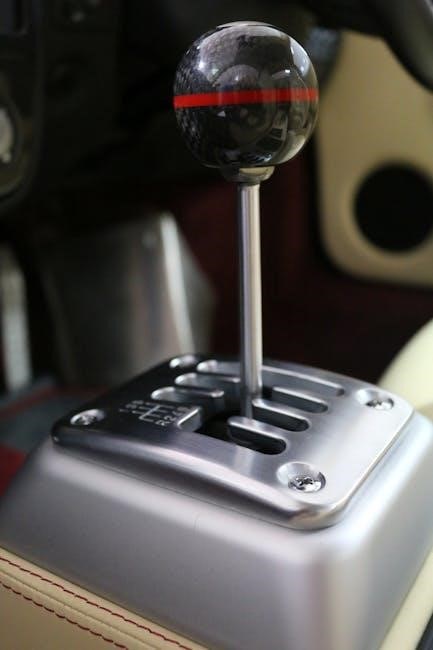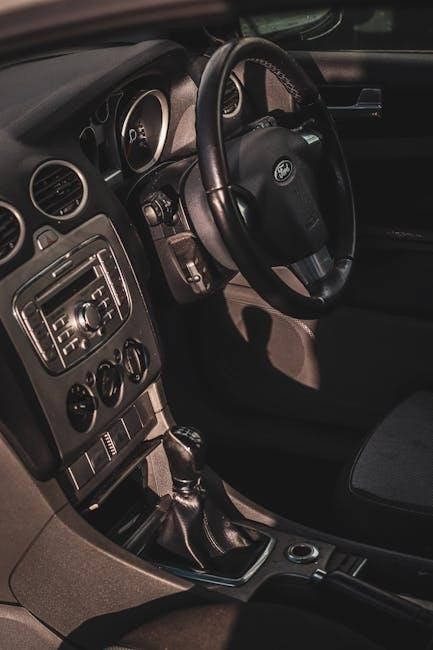Paddle shifters and manual transmissions are two popular choices for drivers, catering to different preferences and driving styles, each offering unique benefits for performance and convenience.

Overview of the Debate
The debate between paddle shifters and manual transmissions has sparked intense discussion among car enthusiasts and everyday drivers. Paddle shifters, often associated with modern automated manual or dual-clutch transmissions, offer quick, effortless gear changes, appealing to those prioritizing convenience and performance in urban or high-speed driving. Manuals, on the other hand, provide a tactile connection to the vehicle, emphasizing driver engagement and control. This debate isn’t just about technology vs tradition; it’s about how drivers interact with their cars. While paddle shifters represent progress and practicality, manuals embody a purist’s delight in mechanical simplicity. Both systems cater to distinct driving styles, making the choice deeply personal. This comparison delves into their strengths, weaknesses, and the scenarios where one shines over the other.
Understanding Paddle Shifters and Manual Transmissions
Paddle shifters are electronic gear-shifting systems typically paired with automated or dual-clutch transmissions. They use steering wheel-mounted paddles to manually select gears, offering quick and convenient shifts without a clutch pedal. Manual transmissions, by contrast, rely on a clutch pedal and a gearshift to engage and disengage gears, requiring the driver to actively participate in shifting. Both systems aim to provide control over gear selection but differ in operation and complexity. Paddle shifters are often more accessible for newer drivers or urban commuters, while manuals appeal to enthusiasts who value the tactile experience. Understanding these mechanisms is essential for evaluating their suitability for different driving scenarios and preferences.

Key Differences Between Paddle Shifters and Manual Transmissions
Paddle shifters and manual transmissions differ in operation and complexity; Paddle shifters use electronic controls for quick shifts, while manuals rely on a clutch and gearshift, offering more driver engagement and tactile feedback.

Driver Engagement and Control
Manual transmissions offer a more immersive driving experience, requiring drivers to actively engage with the clutch and gearshift, fostering a deeper connection to the vehicle’s mechanics. Paddle shifters, while convenient, reduce the need for manual intervention, potentially diminishing the tactile feedback and driver involvement. For enthusiasts, the ability to control gear changes manually enhances the sense of control and satisfaction. In contrast, paddle shifters prioritize ease of use, making them less demanding but also less engaging for some drivers. This difference highlights the trade-off between mechanical interaction and modern convenience, reflecting varying priorities among drivers.
Performance and Acceleration
Paddle shifters typically offer faster and more precise gear shifts compared to manual transmissions, especially in high-performance vehicles. This is due to their ability to pre-select the next gear and execute shifts electronically, reducing lag. Manual transmissions, while slower in shifting, provide drivers with full control over gear changes, allowing for more tailored acceleration depending on driving conditions. However, the mechanical nature of manuals can lead to inconsistent shift times, depending on the driver’s skill. In terms of raw acceleration, paddle shifters often have the edge, particularly in sports cars, where milliseconds matter. Manuals, though, excel in situations requiring nuanced control, such as on winding roads or in specific racing scenarios.
Practicality and Convenience
Paddle shifters are generally more convenient for everyday driving, as they allow drivers to keep their hands on the steering wheel while shifting gears. This feature is particularly useful in heavy traffic or urban environments, where frequent gear changes are required. Additionally, paddle shifters often come with automatic modes, making them more accessible for drivers who prefer a hands-off approach. Manual transmissions, while less convenient in stop-and-go situations, offer simplicity and lower maintenance costs. They also encourage a more engaged driving experience, which can be rewarding for enthusiasts. However, the need to operate the clutch and gearshift manually can be fatiguing in traffic. Ultimately, the choice depends on whether convenience or driver involvement is prioritized.

Advantages of Paddle Shifters
Paddle shifters offer faster gear shifts, ease of use in traffic, and seamless integration with modern technology, enhancing both performance and driving convenience effectively.
Faster Gear Shifts and Improved Performance
Paddle shifters offer faster and more precise gear shifts compared to manual transmissions, particularly in high-performance driving scenarios. By eliminating the need for a clutch pedal, drivers can focus on steering and acceleration, reducing shift times significantly. Dual-clutch systems, often paired with paddle shifters, pre-select the next gear before it’s needed, enabling instantaneous shifts that enhance acceleration and responsiveness. This reduces lag and provides a smoother driving experience, especially during rapid accelerations or decelerations. The quick access to optimal gears also improves control in performance driving, making paddle shifters a preferred choice for those seeking enhanced driving dynamics and precision. Overall, paddle shifters deliver a balance of speed, smoothness, and driver engagement that manual transmissions often can’t match in fast-paced conditions.
Ease of Use in Traffic and Urban Driving
Paddle shifters provide unparalleled convenience in heavy traffic and urban environments, offering a stress-free driving experience. Unlike manual transmissions, which require constant clutch and gear engagement, paddle shifters eliminate the need for a clutch pedal. This simplifies operation in stop-and-go conditions, reducing driver fatigue. The ability to manually shift gears without taking your hands off the wheel enhances control and comfort in low-speed, high-traffic scenarios. Additionally, paddle shifters are less physically demanding, making them ideal for extended periods of urban driving. Their seamless integration with automatic modes further adds to their practicality, allowing drivers to transition effortlessly between manual and automatic operation. This makes paddle shifters a superior choice for city driving where convenience and ease of use are paramount.
Integration with Modern Technology
Paddle shifters seamlessly integrate with modern automotive technology, offering a highly connected driving experience. They are often paired with advanced dual-clutch transmissions or traditional automatics, both of which are electronically controlled for precise and rapid gear shifts. This integration allows for features like sport modes, customizable shift maps, and even predictive shifting based on driving conditions. Additionally, paddle shifters work in harmony with adaptive cruise control and semi-autonomous driving systems, creating a cohesive and modern driving experience. Their compatibility with advanced driver-assistance systems makes them a natural fit for today’s tech-focused vehicles. Furthermore, paddle shifters can optimize fuel efficiency by syncing with engine management systems, ensuring smooth power delivery. This seamless integration with cutting-edge technology makes paddle shifters appealing for drivers who value innovation and convenience behind the wheel.
Disadvantages of Paddle Shifters
Paddle shifters lack a traditional clutch pedal and rely on electronics, which can fail, reducing driver control and adding complexity without a mechanical backup system.
Higher Cost and Complexity
Paddle shifters are significantly more expensive and complex than manual transmissions. This is due to the advanced technology involved, including electronic actuators, sensors, and software integration, which drive up costs. The complexity of these systems can also lead to higher maintenance and repair expenses over time. Additionally, the reliance on sophisticated components means that any issues with the system may require specialized expertise and tools, further increasing costs. While paddle shifters offer convenience and performance advantages, their higher cost and complexity make them less accessible for some drivers. This trade-off between advanced features and expense is an important consideration for those deciding between paddle shifters and manual transmissions.
Reduced Driver Engagement in Automated Modes
Paddle shifters, while offering convenience, can reduce driver engagement when in automated modes. The lack of a clutch pedal and manual gear control diminishes the tactile connection drivers feel with the vehicle. This can make the driving experience feel less immersive, especially for enthusiasts who value the interaction and control of a manual transmission. Additionally, the reliance on automated systems may lead to a sense of detachment, as the car often dictates gear changes based on its programming rather than the driver’s input. While this is beneficial for ease of use, it can be a drawback for those who prioritize driving involvement and the satisfaction of actively managing the vehicle’s performance.

Advantages of Manual Transmissions
Manual transmissions offer enhanced driver engagement, lower costs, and better fuel efficiency in specific driving conditions, making them a popular choice for driving enthusiasts and budget-conscious drivers.
Enhanced Driver Engagement and Control
Manual transmissions provide a more immersive driving experience, offering direct control over gear shifts and engine speed. The physical act of using a clutch and gearshift creates a stronger connection between the driver and the vehicle, fostering a sense of mastery and engagement. Drivers can precisely manage acceleration and deceleration, which is particularly beneficial in dynamic driving scenarios. This level of control allows for smoother transitions and better responsiveness, especially on winding roads or during spirited driving. The tactile feedback from the gears and clutch enhances the overall driving experience, making it more enjoyable and rewarding for enthusiasts who value the art of driving.
Lower Cost and Simplicity
Manual transmissions are generally more affordable than paddle shifters, both in terms of initial purchase price and maintenance. They have fewer components and less complex technology, reducing production and repair costs. This simplicity also translates to reliability, as manual transmissions have fewer electronic parts that could fail. Additionally, manuals are often lighter, improving fuel efficiency and handling. Their straightforward design means drivers don’t need to worry about expensive software updates or specialized tools for repairs. This makes manual transmissions a cost-effective and practical choice for budget-conscious drivers or those seeking a no-frills, dependable driving experience without the financial burden of advanced automation.
Better Fuel Efficiency in Certain Conditions
Manual transmissions often provide better fuel efficiency compared to paddle shifters in specific driving conditions. This is because manuals allow drivers to have full control over gear shifts, enabling optimal engine speed management. In scenarios like steady highway driving or light traffic, manual drivers can maintain lower RPMs, reducing fuel consumption. Additionally, manuals typically lack the parasitic losses associated with automatic or dual-clutch systems, further improving efficiency. However, this advantage diminishes in heavy traffic or stop-and-go situations, where frequent shifting can negate fuel savings. Overall, for drivers prioritizing economy in consistent driving conditions, manuals remain a strong choice, offering tangible benefits for those willing to engage with the vehicle actively.
Disadvantages of Manual Transmissions
Manual transmissions require more driver effort, with a steeper learning curve and increased fatigue in heavy traffic, making them less convenient for urban or stop-and-go driving conditions.
Steeper Learning Curve
Manual transmissions require drivers to master the coordination of the clutch pedal and gearshift, which can be challenging for beginners. Unlike paddle shifters, manuals demand a deeper understanding of when to shift gears, as improper timing can lead to stalling or uneven acceleration. New drivers often struggle with the initial learning process, as it involves multitasking—pressing the clutch, shifting gears, and accelerating smoothly—all while maintaining focus on the road. This complexity can be intimidating and time-consuming to master, especially in stop-and-go traffic or hilly terrain. However, once learned, many drivers find the skill rewarding and integral to the driving experience.
Increased Driver Fatigue in Heavy Traffic
Manual transmissions can lead to increased driver fatigue, particularly in heavy traffic or stop-and-go conditions. Constantly pressing the clutch and shifting gears requires physical effort and attention, which can become tiring over time. In contrast to paddle shifters, which allow for seamless, clutch-free shifting, manuals demand more active engagement, especially in congested urban environments. The repetitive action of depressing the clutch and shifting through gears can strain the driver’s leg and foot, making long commutes more exhausting. Additionally, the mental focus required to coordinate gear changes in traffic can heighten stress levels. For drivers who frequently navigate heavy traffic, this can make manual transmissions less practical compared to paddle shifters or automatic systems.

Scenarios Where Paddle Shifters Excel
Paddle shifters shine in high-performance driving and urban environments, offering quick, precise control and reduced fatigue, making them ideal for both track days and city commutes.
High-Performance Driving on Track Days
Paddle shifters excel in high-performance driving on track days due to their ability to deliver lightning-fast gear shifts without requiring the driver to take their hands off the steering wheel.
This allows for precise control and seamless acceleration, enabling drivers to maintain focus on the track and optimize their lap times. Compared to manual transmissions, paddle shifters eliminate the need for clutch operation, reducing distractions and enabling smoother transitions between gears. This makes them particularly advantageous in high-speed, competitive environments where every fraction of a second counts. The instant responsiveness of paddle shifters enhances the driving experience, providing a more immersive and efficient connection to the vehicle’s performance capabilities.
City Driving and Stop-and-Go Traffic
Paddle shifters are highly advantageous in city driving and stop-and-go traffic due to their ease of use and smooth operation, reducing driver fatigue in congested urban environments.

With paddle shifters, drivers can effortlessly switch gears without the need for a clutch pedal, allowing for seamless acceleration and deceleration in heavy traffic conditions. This eliminates the constant manual shifting required with traditional manual transmissions, which can be tiring in stop-and-go scenarios. Additionally, paddle shifters often come with automatic modes, further simplifying the driving experience in urban settings. This makes them ideal for commuters who value convenience and comfort without compromising on performance or control, ensuring a more relaxed and efficient driving experience in bustling city environments.

Scenarios Where Manual Transmissions Excel
Manual transmissions shine in off-road conditions and winding roads, offering precise control and better fuel efficiency, making them ideal for enthusiasts seeking an engaging driving experience.

Off-Road and Low-Traction Conditions
Manual transmissions excel in off-road and low-traction scenarios due to their ability to provide precise control over gear shifts. Drivers can better modulate power delivery, essential for navigating uneven terrain like mud, sand, or rocks. Paddle shifters, especially those linked to automated systems, may struggle in these conditions, as their electronic controls can be slower to react or may interpret low-traction situations as errors, overriding driver input. Manual transmissions allow for feathering the clutch and controlling torque, which is critical for maintaining traction and stability in challenging environments. This level of driver engagement and mechanical simplicity makes manuals the preferred choice for off-road enthusiasts and professionals alike, ensuring reliability and adaptability in harsh conditions.
Enthusiast Driving on Winding Roads
Manual transmissions shine when it comes to enthusiast driving on winding roads, offering a level of engagement and control that paddle shifters struggle to match. The tactile feedback of the clutch and gearshift creates a direct connection between the driver and the vehicle, allowing for precise control during sharp turns and elevation changes. Paddle shifters, while fast, often lack the emotional engagement of a manual, as the process feels more automated and less interactive. For drivers who value the art of shifting gears and the satisfaction of mastering a challenging road, manuals provide an unparalleled experience. The ability to deliberately select the right gear for the terrain enhances responsiveness and ensures a more immersive driving experience, making manuals the preferred choice for purists and enthusiasts alike.
Maintenance and Durability Considerations
Manual transmissions are generally simpler and more durable, requiring less maintenance, while paddle shifters involve complex electronics, leading to higher repair costs over time.
Maintenance Costs of Paddle Shifters
Paddle shifters typically incur higher maintenance costs due to their complex electronic and mechanical components. Repairs for actuators, sensors, or the transmission control module can be expensive. While they are generally reliable, routine maintenance, such as fluid changes and software updates, adds to the overall cost. Additionally, if a component fails, replacing it can be costly compared to manual transmissions. However, modern paddle shifters are designed for durability, minimizing frequent repairs. Despite this, the sophistication of the system means that when issues arise, they often require specialized expertise, further increasing expenses. This makes paddle shifters less appealing for budget-conscious drivers who prioritize low upkeep costs.
Longevity and Reliability of Manual Transmissions
Manual transmissions are renowned for their durability and reliability, often outlasting other types of transmissions with proper care. The simplicity of their mechanical design reduces the risk of complex failures. Components like the clutch and gear sets can be replaced individually, extending the transmission’s lifespan. While wear and tear on the clutch is inevitable, it is a relatively affordable and straightforward repair. Additionally, manual transmissions are less prone to overheating and electronic malfunctions, common issues in automated systems. This makes them a dependable choice for long-term use, especially in harsh driving conditions. Their straightforward construction also means they require less specialized knowledge for repairs, further enhancing their reliability and cost-effectiveness over time.
Ultimately, the choice between paddle shifters and manual transmissions depends on personal preference, driving habits, and the desired balance between performance and traditional driving experience.
The Verdict: Which is Better?
The debate between paddle shifters and manual transmissions ultimately comes down to personal preference, driving habits, and the type of experience desired. Paddle shifters offer unmatched convenience, faster gear changes, and seamless integration with modern technology, making them ideal for city driving and high-performance scenarios. On the other hand, manual transmissions provide a deeper connection to the vehicle, cost less, and often deliver better fuel efficiency in specific conditions. For enthusiasts seeking control and engagement, manuals are unparalleled. However, for those prioritizing ease and performance, paddle shifters are the superior choice. Both options cater to different needs, and neither is universally better—it’s about aligning the transmission type with the driver’s lifestyle and preferences.